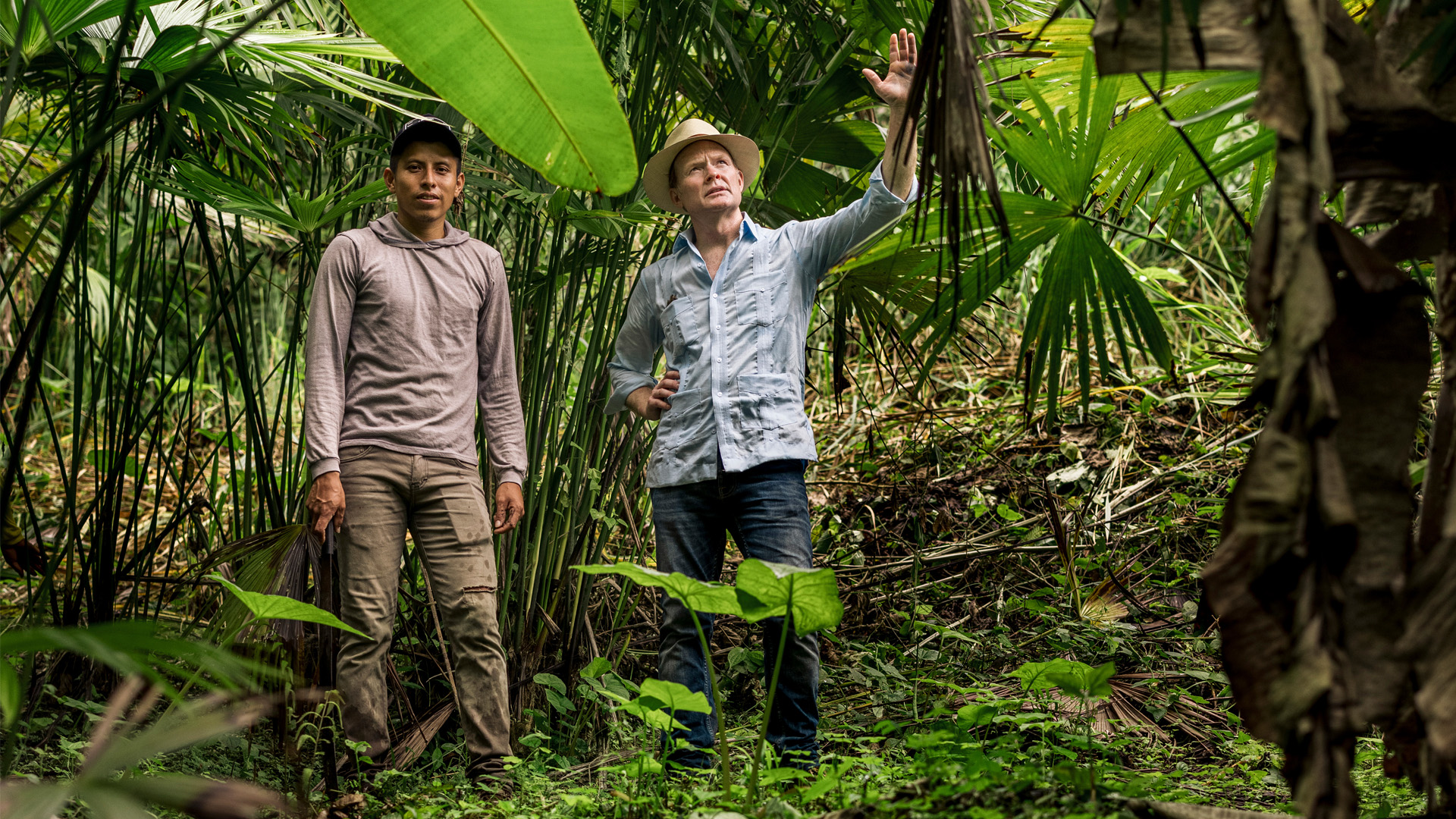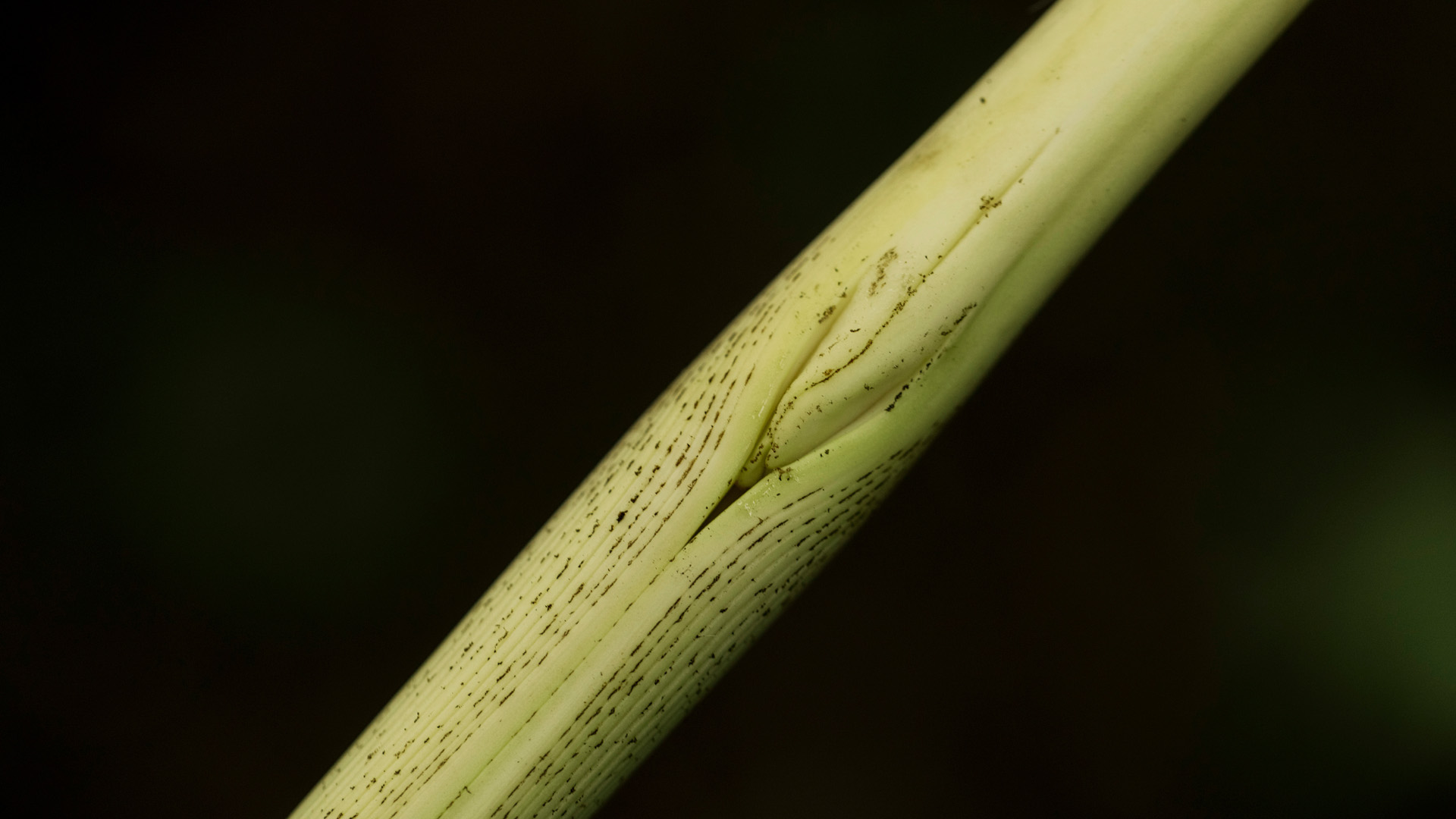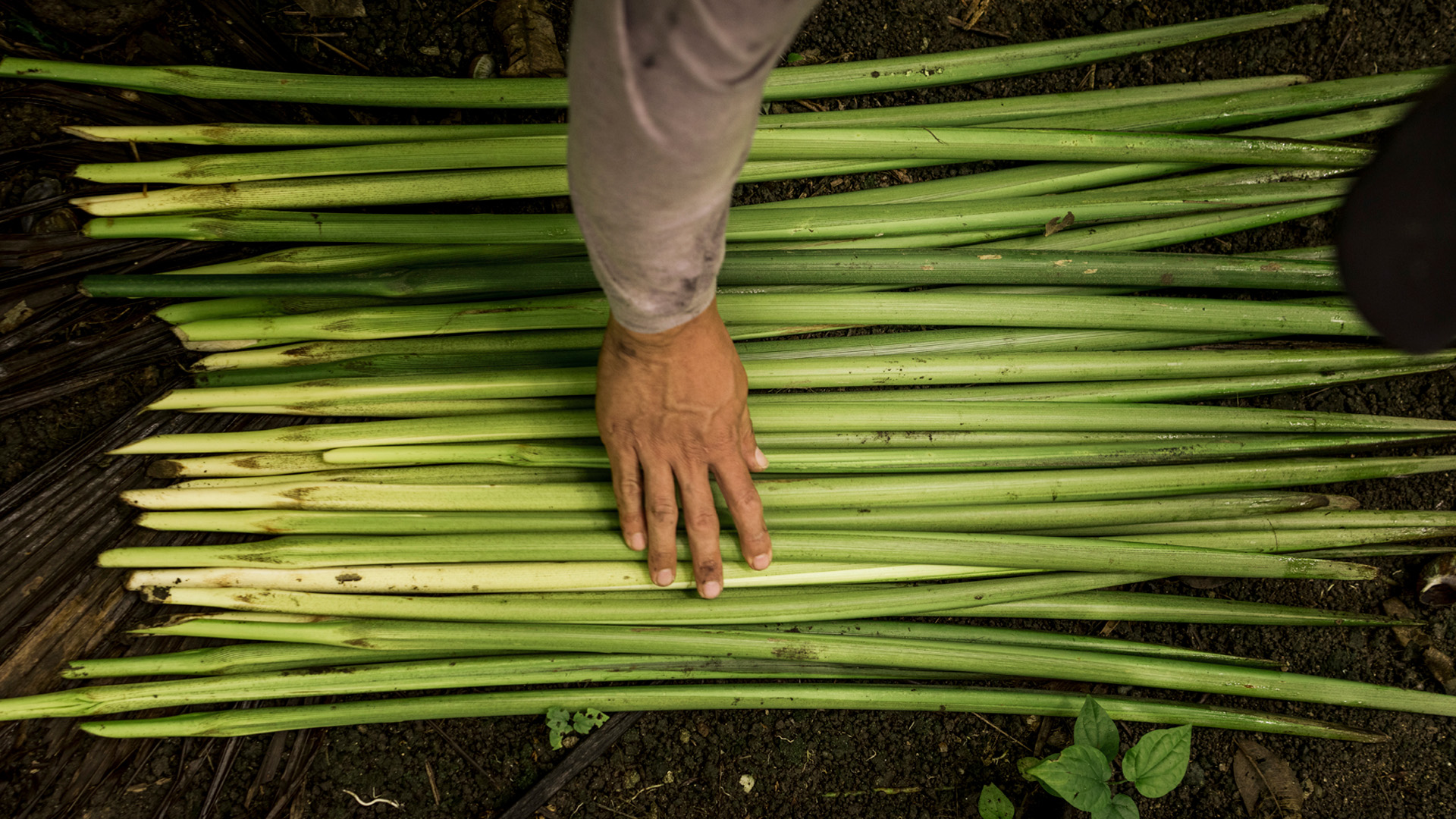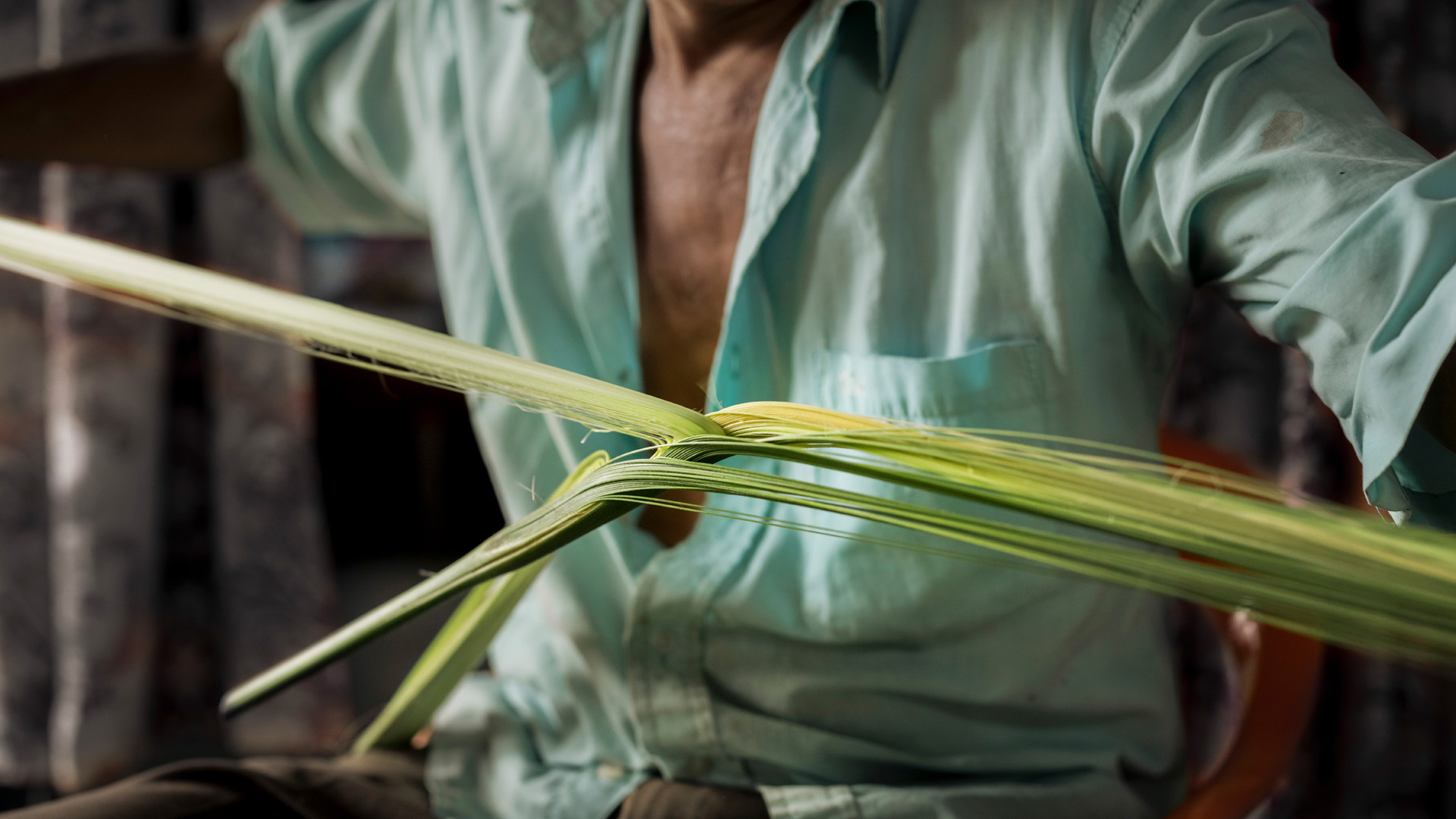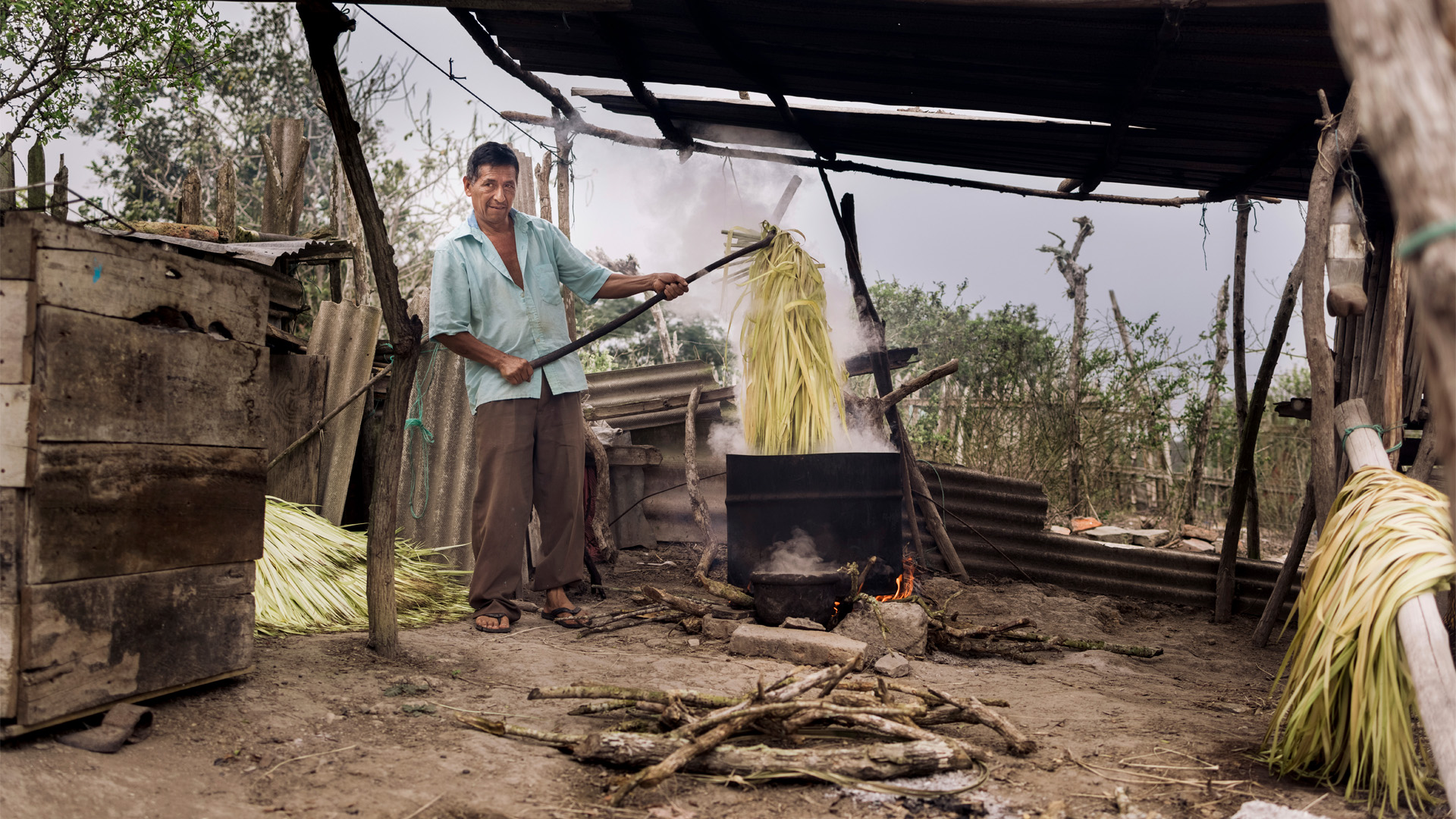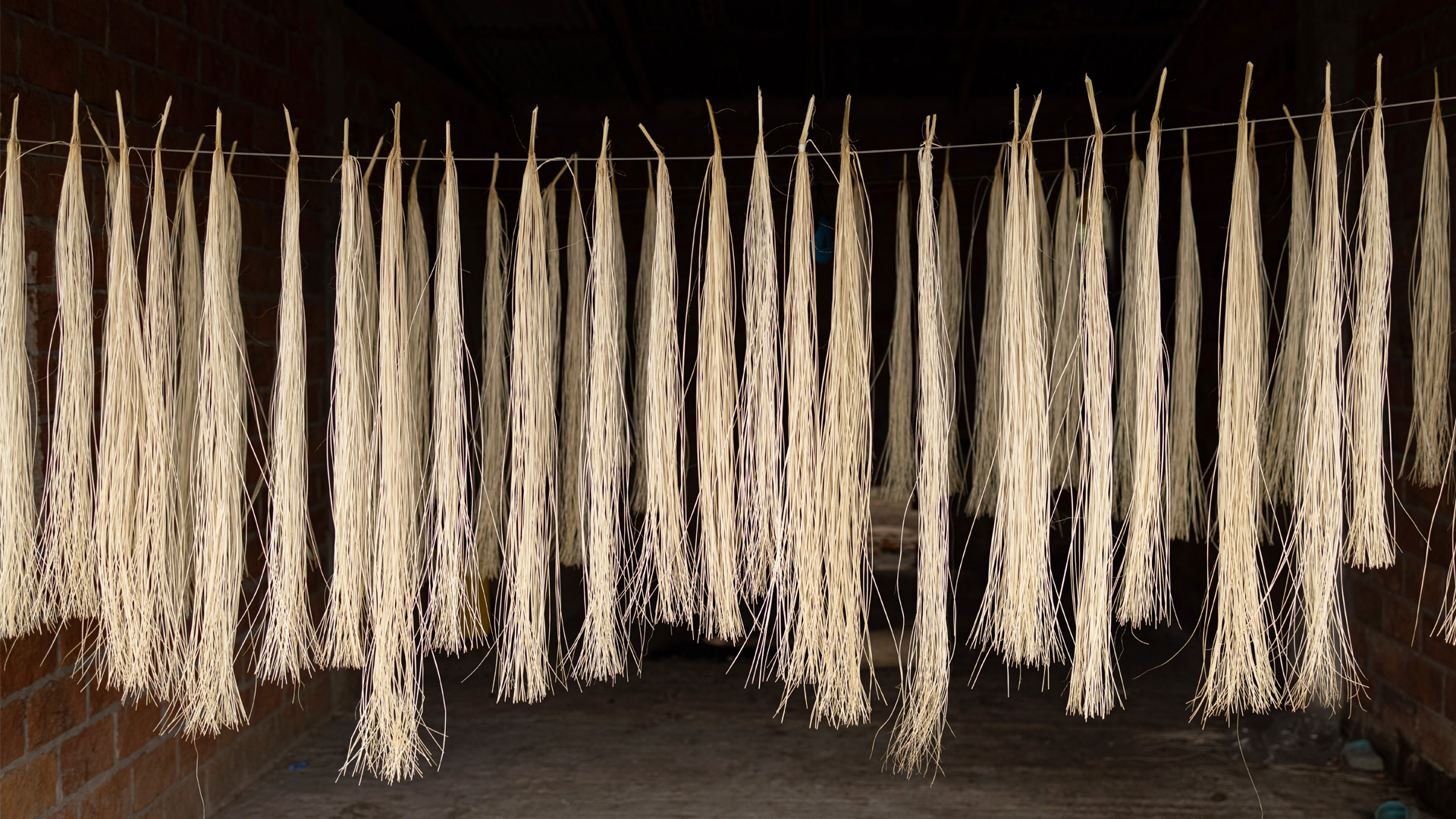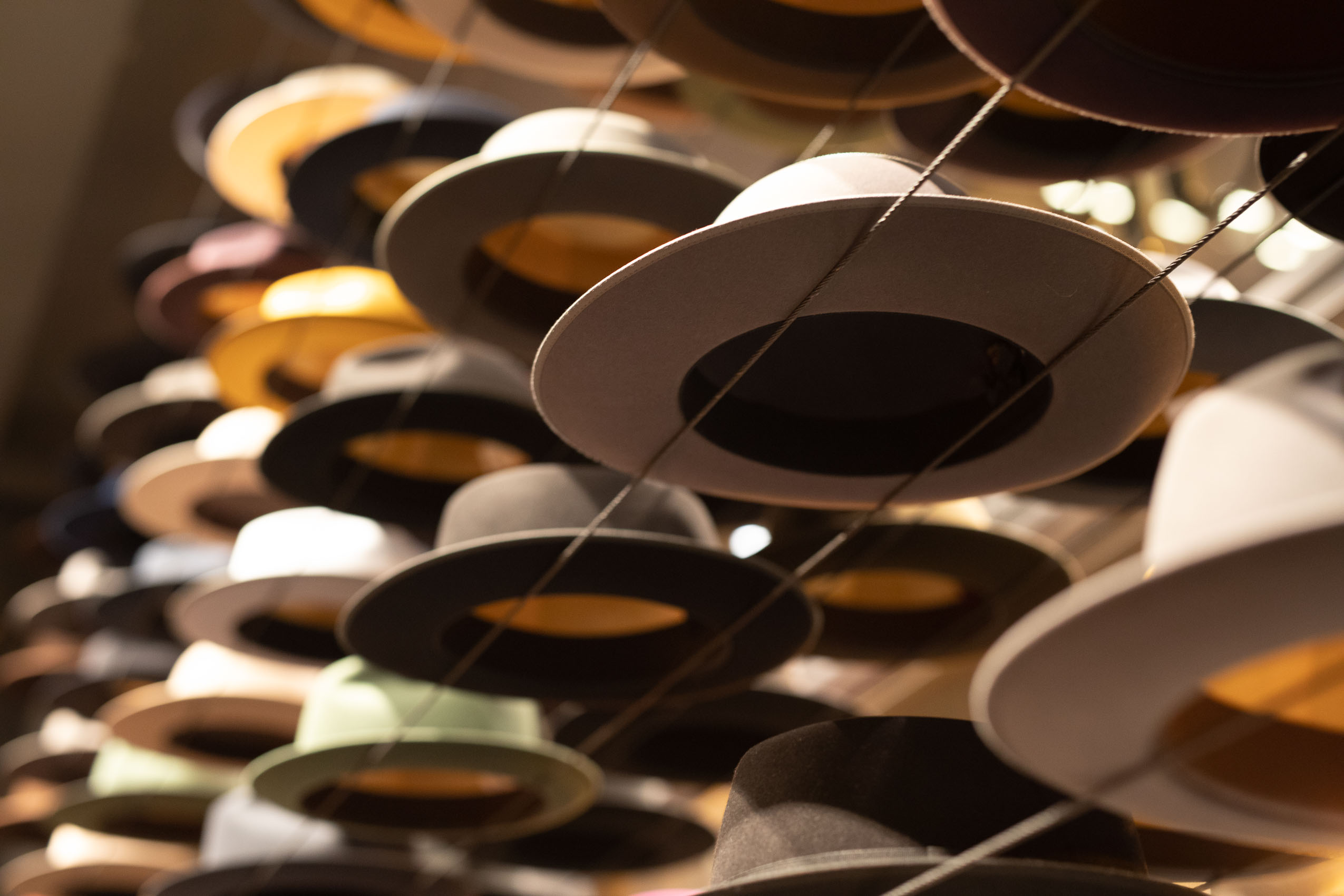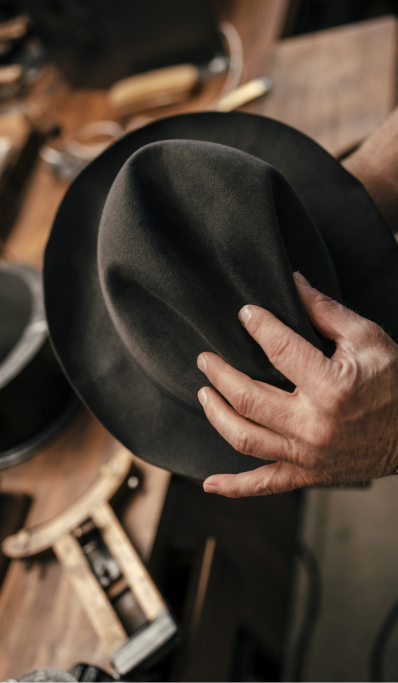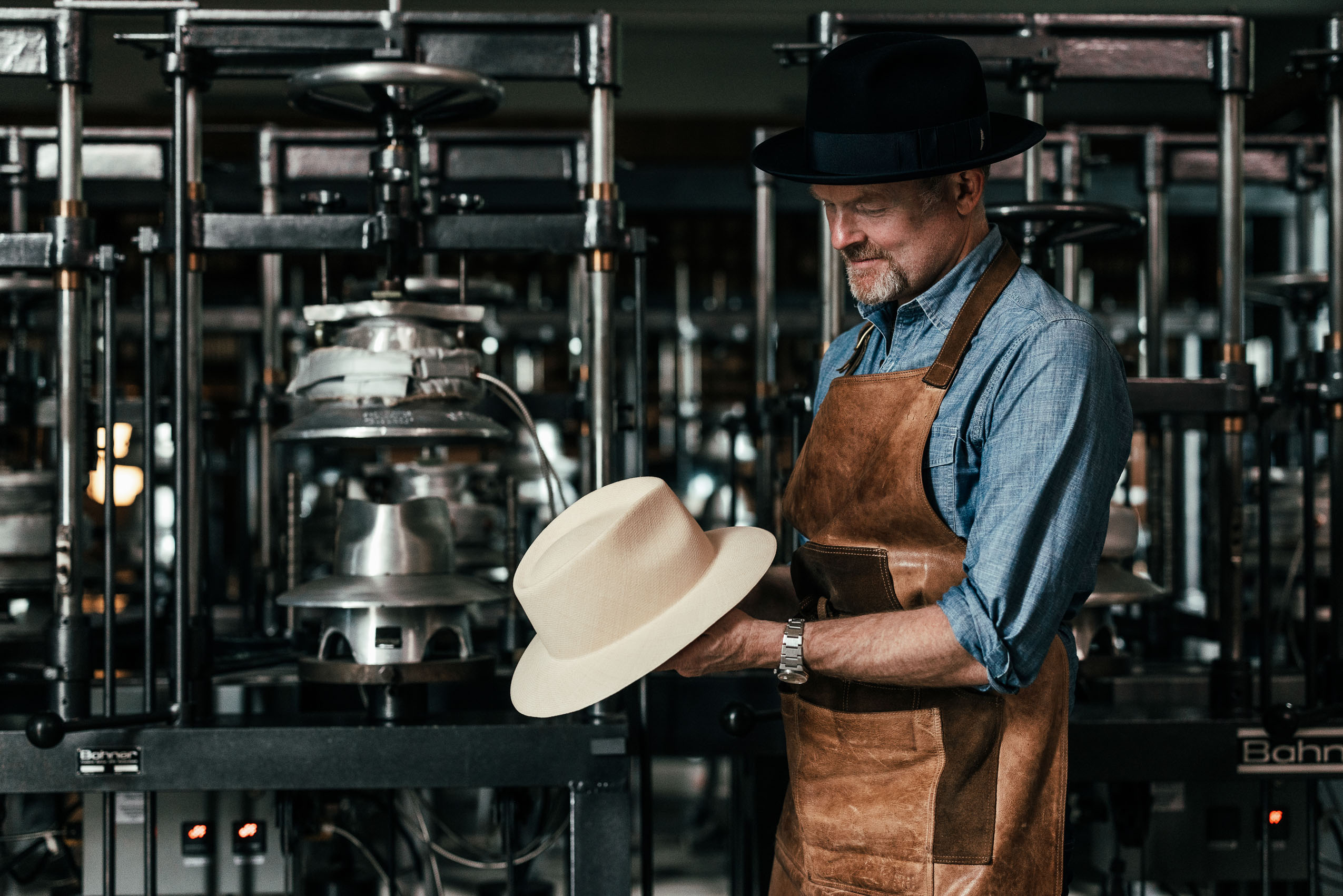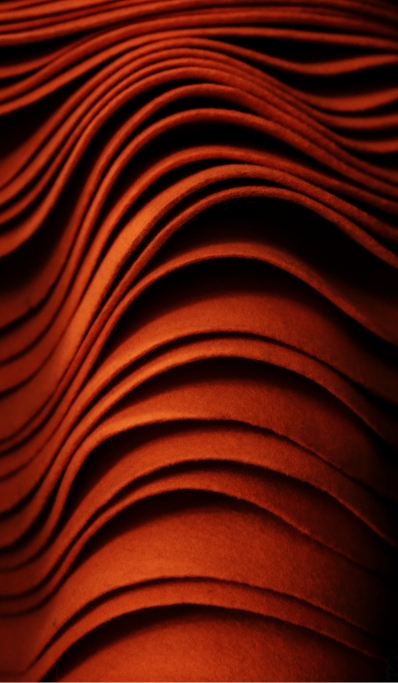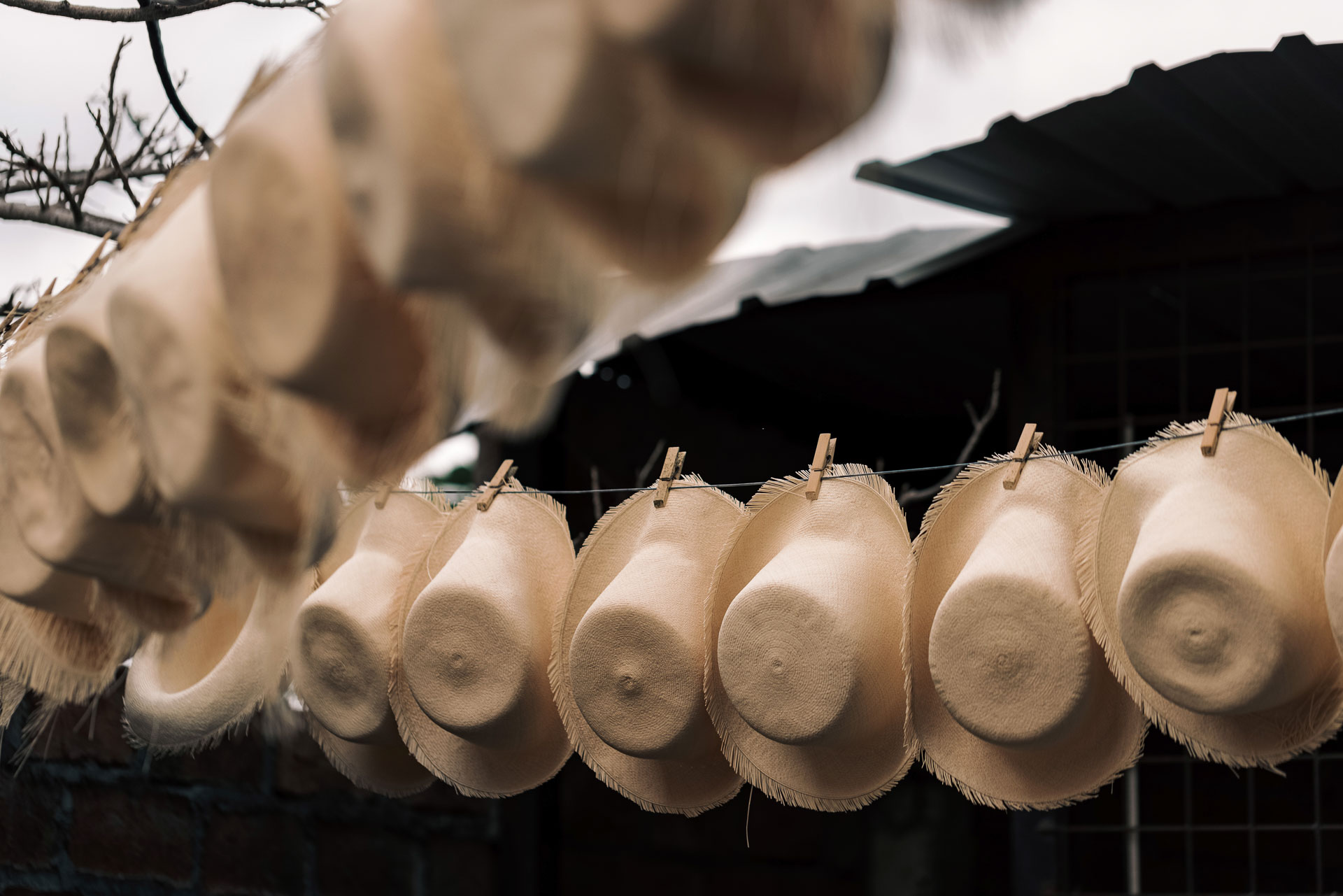Making a straw
The most exquisite Panamas, showing the highest level of artisanal craft, are woven in the Manabí province of Ecuador. This is where the town of Montecristi is found, whose name is synonymous with the finest Panama hats.
Before skilled craftsmen can begin weaving the straw, it must be harvested (strictly speaking, a Montecristi is not made from straw but from fibres from the stem of a plant called “paja toquilla”). This sounds easy, but nature will relentlessly test your determination in finding the evasive plant with heat, insects, mud and humidity. Besides, you will have to make your way to the plant at the right time. Too young — and the yield will not be strong enough to be woven and will not be durable. Too old — and the material will be too rigid to manipulate into a beautiful weave. The difference between the two can be a matter of days or even hours.
Once harvested, the cogollos need to dry before further processing. The tougher outer layers are then removed, exposing the individual leaves of the inner part which are rather tender. Tough, outer edges are discarded – and so are the casings. Only the finest strands will end up being used. Less quality strands are used for baskets, trays etc.
From here, the strands undergo several processes before they are ready to be woven. They are boiled, bleached, sorted, and slit into desired width. The narrower the strand, the finer the weave.
Weaving
The actual weave process can be completed in a matter of days, weeks or months depending on how fine the weave. The weave process is much more than the weave itself and several specialized craftsmen lend their expertise to the process before they are ready for Optimo’s inspection. The weavers do not weave actual hats, but instead the fabric from which a hatmaker can produce a hat. At Optimo, we call the result of the weaver’s work campanas because of their bell-shape (campana is Spanish for bell).
When selecting campanas we are looking for several components inviable to the untrained eye. For example, if the weave is tightened inconsistently the hat will become crooked over time.
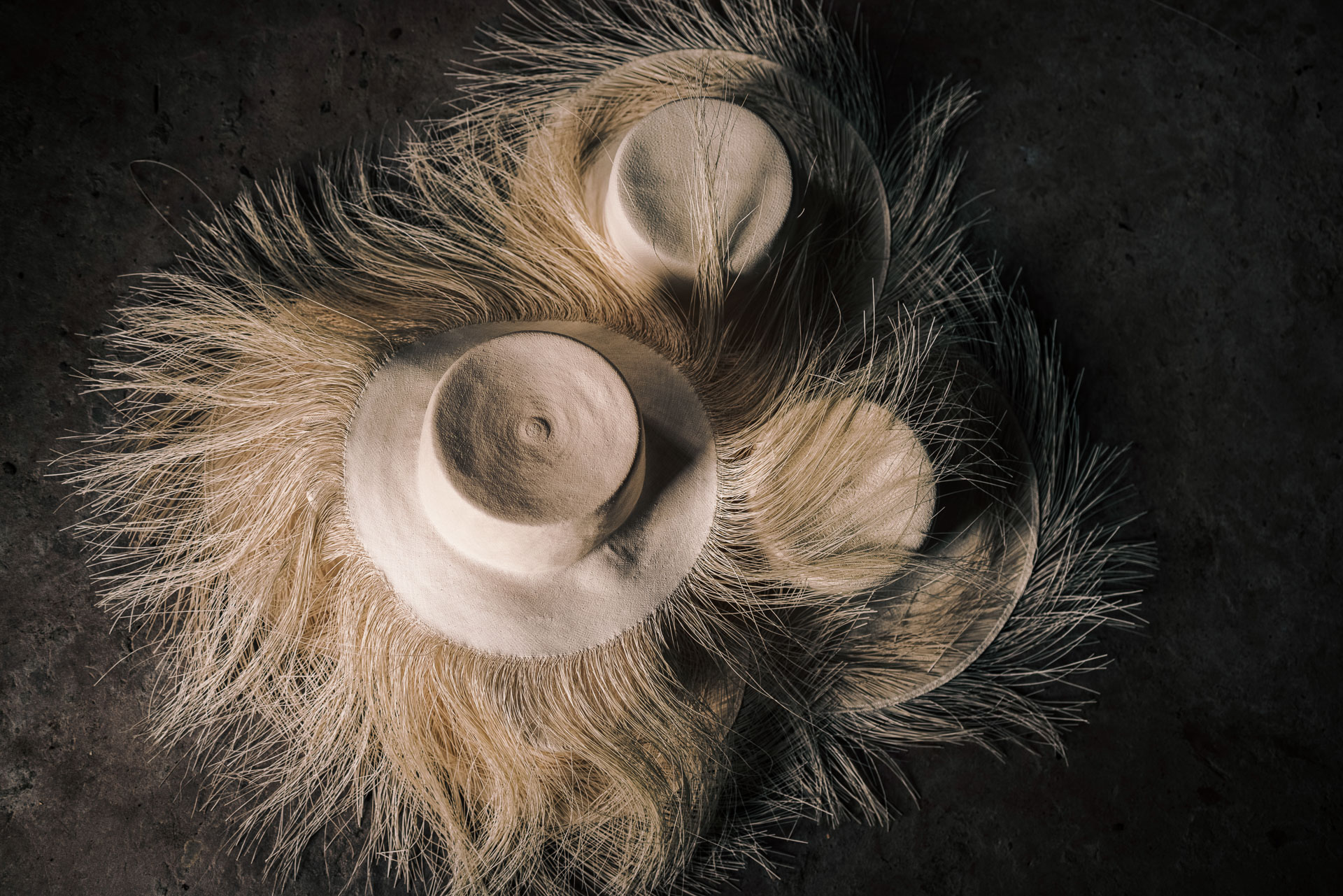
Finishing
When the selected campanas arrive at Optimo, we strive to honor the weaver’s art by manipulating the campanas as delicately as possible. Forcing campanas into shapes and sizes they are not meant to will produce hats incompatible with the quality we aim for at Optimo.
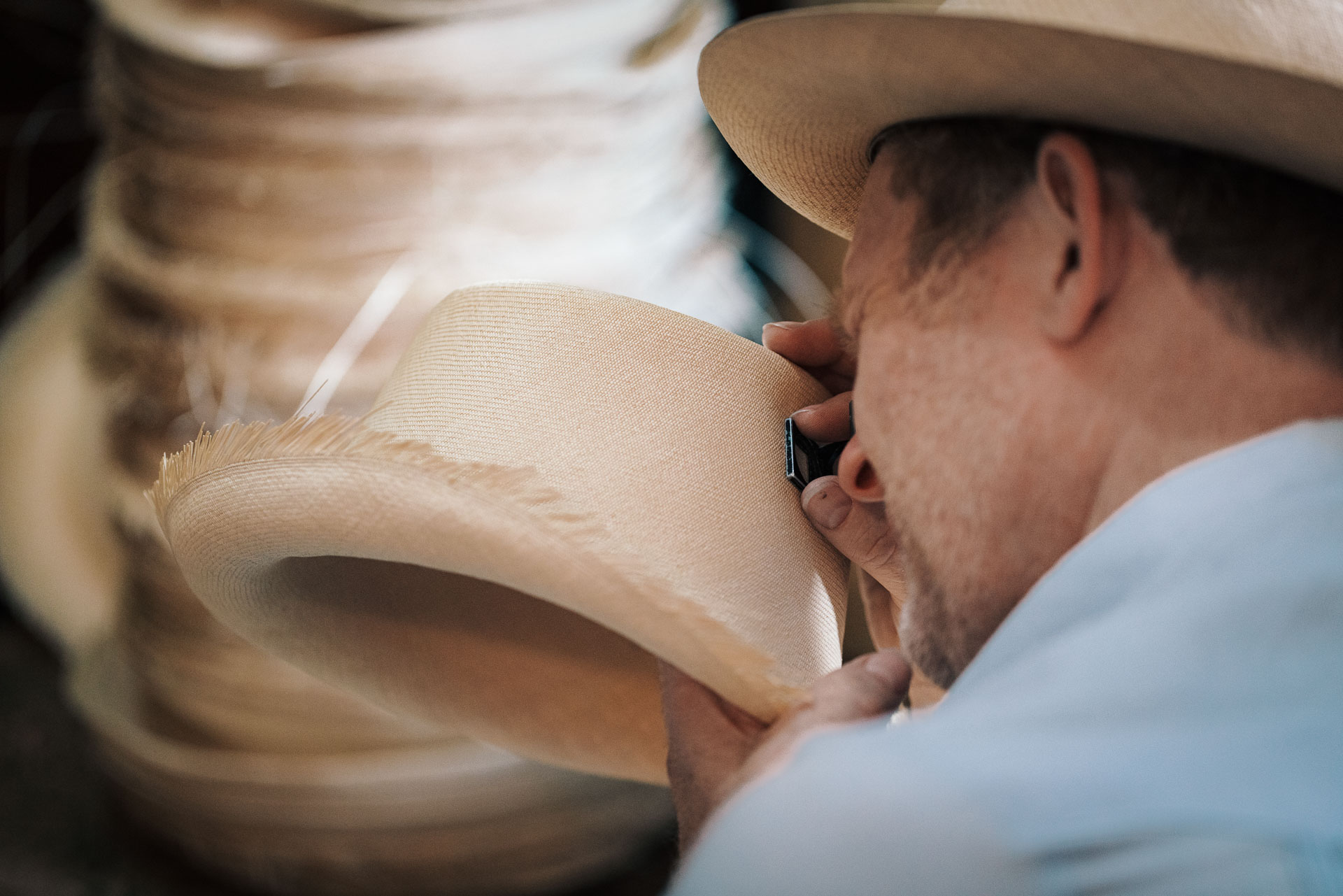
Quality
Optimo takes several main factors into account when valuing a Montecristi, and we have developed a system inspired by the grading of fine jewelry, diamonds and other rare gems: The four F’s: Fineness, Firmness, Flawlessness, and Finishing.
Grading – The four F’s
Fineness
A typical method to determine weave tightness is simply counting the number of weaves per square inch. This measurement is important, but it is a reductive approach which omits critical variables like consistency, symmetry, feel, color, balance, styling and overall beauty and performance of the finished hat.
Basic weave count is determined by counting the number of wefts over one inch both vertically and horizontally. To find the number of wefts per square inch (wpsi), the measured weft numbers are multiplied – for example 24 x 28 making the wpsi 672 wpsi. Weave tightness and fineness has a major impact on the time needed to weave a campana, but the true quality of a hat can only be assessed when all other aspects are considered.
Firmness
Even a very finely woven hat can be near worthless if the straw quality and/or finishing is poor. The best hats are woven from straw with strong tensile strength. At any level of fineness, the better hats are made of the straw which has the highest tensile strength for the level of fineness of the straw.
One mistaken sign of quality has been to count the number of rings or “vueltas” (concentric circles) inside the crown of the hat. A “ring” occurs as the weaver ties additional strands of straw into a campana. Finer hats tend to have more “vueltas” but many believe that the more rings a hat has, the finer the weave and thereby the finer the hat must be. This is true if all strands are equal in length, which they of course are not. Vueltas are not a nominator for quality. You can easily find a fine hat with fewer vueltas, but just as easily find a mediocre hat with many vueltas. In general, the strongest and best hats have the fewest number of vueltas to their respective weave count.
Flawlessness
Flawlessness does not exist in Montecristis, but is a goal to strive for. There will always be inconsistencies in the straw and the weave. It is simply not possible to weave a completely flawless campana by hand using natural materials. Of course, the number of inconsistencies are different from weaver to weaver, as are the number of variations in the material the hats are made from. This includes variations in how evenly and precisely the hat is woven as well as its color. The most flawless campanas are uniform in weave. They are free of holes or gaps in the weave. The edge of the brim is evenly finished. There are no dark spots or abrasions and the color is uniform and beautiful.
Finishing
The characteristics mentioned thus far have all been related to the essential material from which the hat is made, la campana. The final and essential part of a hat’s overall quality and performance is determined by the finishing: when the campana becomes a hat.
This can be likened to when an exquisite diamond is chosen and elegantly crafted into a ring by the jeweler, or a fine woven textile is selected, cut and sewn into a suit by a tailor. Nearly all Montecristi campanas finished by Optimo are commissioned from the greatest artisans in Ecuador. After decades of exploring, testing and relationship building, Optimo deals with only the best campanas from the most highly skilled weavers. Campanas have a relatively generic form. From there, they are made at Optimo into various finished shapes including Fedoras, Trilbys, Optimos, etc. All styles require certain specifications such as brim width, crown height and size.
Learn more
